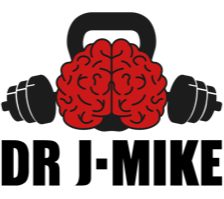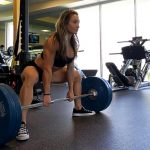Ten critical components of program building
There are hundreds and even thousands of workout routines out there. However, as I have mentioned time and time again, the complex workouts are not always the most effective. Full body and rotating total, upper and lower body are an effective way to build muscle, especially for beginners and intermediate trainees. These are highly popular and research does show that training frequency is a key variable that also has to fit within both volume and intensity parameters.
However, one of the many unforgotten pieces of training is utilizing the most effective critical components of your programming. Let’s take a look at what these critical aspects are and how they can reshape your training.
1). Master the Warm-Up Process
Warm-ups of any kind are an absolute must when designing any type of training program. Warm-ups help to stimulate the nervous system, increase blood flow to the muscles, enhance joint centration, enhance proprioception, neuromuscular efficiency and biofeedback.
There are essentially innumerable types of warm-ups to incorporate into your training. However, one of the biggest problems that people have is either not being specific enough with their warm-up movement patterns or spending way too much time with the actual warm-ups. The goal is to be specific with your movement patterns. Be concise and be efficient in order to get ready for the actual training session.
Spend some much needed effort into designing a well rounded warm-up routine that is specific not only to the actual training day, but focus on working the specific weak points via ankle mobility, thoracic mobility, or single-leg work. If you choose to use myofascial release techniques, a corrective exercise approach or activation drill, your performance and fluidity of training will enhance tremendously.
Most people either don’t do enough warm-up or take too long. Get efficient and create 6-10 specific drills until you have mastered the levels of on each selected exercise. As you make progress, rotate out for other more challenging movements or add a progression on the current one in progress. Quit majoring in the minors. Create a definitive reason for using each drill you incorporate. If you can adhere to these simple guidelines, your warm-up will be the most optimal 10-12 minutes in efforts to reduce injury.
2). Maintain Basic Performance Recovery Guidelines
It’s not always how much you can train and what you do, it’s a matter of what you are able to recover from. Those that train hard and year-round should also spend an equal amount of time with recovery methods. While recovery is multifaceted, here are some takeaways that promote optimal recovery:
- Get enough uninterrupted sleep. The amount of quality sleep varies between people to obtain ultimate function. Some need 6, others need 8 or more. Find what works best for you. Take naps if you must and try to limit caffeine and energy drinks at night.
- Control life stressors that can weaken immune system markers. Don’t try to keep up with the “Jones’”. Try some good antioxidants, high quality micronutrients and minerals like zinc, magnesium, vitamin D, and omega-3 fatty acids, and even some creatine, yes creatine!
- Eat high protein. Shoot for 1.6-2.0 grams/kg/bw, that is the upper threshold. 2.3-3.0 is for lean folks when in caloric deficit and/or doing heavy resistance training.
- Do mobility sessions and do active release techniques to promote tissue adaptations and recovery. Sometimes full mobility and release technique sessions are great but they should mostly be included in your training program.
3). Progressive Overload Comes in Many Shapes and Sizes
The main method is to progressively lift heavier loads or increase training volume. This is one of the main drivers of muscle growth over time. Without it, you won’t see long-term progress. You have to apply a load or stress greater than what the muscles had previously adapted to. Simply, the additional mechanical tension allows various growth factors and pathways to adapt and create muscle growth. While progression and progressive overload are used interchangeably, here’s where the grey area lies:
The majority of people think overload is mainly weight, which is true. However, there are many other variables that correspond to progressive overload besides weight.
- Sets, reps, and volume.
- Intensity and velocity of the training, which most people forget about. If you can train at a higher intensity or move weight faster or enhance your speed in an exercise, THAT is also a progression.
- Use various pieces of equipment like kettlebells, sandbags, different bars, speeds, tempos, and rest intervals.
Building strength and muscle doesn’t require you to train for absolute max strength, you just need to significantly improve strength over time, manipulate training variables appropriately and customize them for the person.
4). Understand the Role of Energy Systems within Performance and Recovery
There are 3 main energy systems (bioenergetics) that provide energy or ATP:
1). Phosphagen
2). Glycolysis
3). Mitochondria Respiration, or Oxidative.
Phosphagen: The phosphagen system is the quickest way to resynthesize ATP and is active at the start of all types of training regardless of intensity. The phosphagen system can only supply enough ATP and Creatine phosphate lasting for a minimum of 6 seconds, and up to 30 seconds of serious effort. Events such as explosive speed and power, shot put throw, olympic weightlifting, max deadlift, vertical jump, 100m sprint and yoke walk use this system. However, it does not operate at full throttle beyond the time frame. This is the primary energy pathway that creatine monohydrate supplementation is built upon.
Glycolysis: This system becomes the primary ATP source during high intensity muscular work that last from 30- seconds to about 2–3 minutes. It is the second fastest way to resynthesize ATP. Glycolysis, which is the breakdown of glucose, breaks down either in the form of either blood glucose or muscle glycogen; the stored form of glucose is used. The best examples of all-out glycolysis is a 200-meter and 400-meter sprint, battle ropes, prowler pushes and sled and heavy strength work.
Oxidative/Aerobic: Operates continuously and is probably the most important both at rest and during training. It is the slowest way to resynthesize ATP but provides a large magnitude of ATP, and it is fueled primarily on fat and glucose. Those who are more highly trained reach steady state quicker vs. less trained individuals. Many don’t realize low/moderate intensity aerobic activity enhances recovery from other forms of training. The majority of long distance events and sports like marathon and cycling, soccer and basketball require exceptional aerobic capacity.
There is no on and off button with these systems. They are active simultaneously, but it is just the dominance of the system that changes depending on exercise duration and intensity.
5). Stop Maxing Out Every Other Day
 Most people think that in order to make continued progress you have to max out your lifts several times a week. This is a very dangerous and myopic approach to training. Maxing out on lifts requires a specific strategy but also requires a very high neurological demand that is more taxing and requires more recovery time. Instead of using high percentages, focus on submaximal strength and be able to train across all strength and speed curves in order to maximize performance both at the maximum strength level and at the acceleration level. This is based on fundamental principles of the force velocity curve.
Most people think that in order to make continued progress you have to max out your lifts several times a week. This is a very dangerous and myopic approach to training. Maxing out on lifts requires a specific strategy but also requires a very high neurological demand that is more taxing and requires more recovery time. Instead of using high percentages, focus on submaximal strength and be able to train across all strength and speed curves in order to maximize performance both at the maximum strength level and at the acceleration level. This is based on fundamental principles of the force velocity curve.
6). Don’t Neglect Unilateral Training
Training unilateral movements can be a daunting task for many, as trainees neglect single-leg and various unilateral upper body exercises by favoring bilateral movements. Most people have less than desirable single-leg strength, but if they did, they would see their bilateral movements increase in strength and hypertrophy. A lack of single-leg stability, strength, power and agility is linked to potential increases in lower back, hip and knee injuries, but also increases bilateral strength, and overall stability.
7). Incorporate Explosive Power Into Your Training
It’s no surprise that research has shown time and time again that lower body power is a critical component to training and athletic development that can be used throughout the annual training cycles. Want to increase your overall power output? Then rotational power is the name of the game.
People train too much in the sagittal plane, can’t stabilize in the frontal plane and lack power and rotation in the transverse plane. Every program out there should be utilizing fundamental rotational power. Rotation of the torso is controlled by the external obliques, internal obliques, and multifidus/spinal stabilizers. If rotation is compromised, the brain restricts strength even in the sagittal and frontal planes. Gait patterning and incorporating anterior and posterior slings create explosive performance, so if you lack rotation, performance will suffer as a result.
8). Incorporate Non-Traditional Core Training
Core stability comes not only in many forms, but in large variations as well. Often people fail to train up and down the kinetic chains and work on stability in a variety of movements, progressions and planes of motions. The core is often trained to stay stable or resist movement, leading to a greater force transfer especially during rotation. It’s meant to enhance performance by controlling spinal movement and not going into unwanted positions through repetitive awkward movement that may aggravate it. Many people look for various unique and unconventional core exercises to try. Core is a central system needed in various movements, and therefore, working it all around is essential. If you want to begin to add some flame to your core training, think outside the box.
For outside the box core exercises, click here.
9). Keep the Programming Simple But Execute at a High Level
Athletes and clients don’t need the latest fad. They don’t need crazy programming. They need fundamental movements executed at a high-level. Pay attention to the world around you and who you interact with when it comes to coaching and programming. Training complexity is not always the most effective. Too many coaches and trainers create a false narrative that the more complex and advanced the training plan, the better the results. In fact, it’s quite the opposite; simplicity is often the ultimate sophistication. Keep that in mind as you program for your specific populations.
10). Prioritize and Match Your Nutrition To Your Training Outcomes
This can be an entire journal article in itself. I’ll keep it simple: all diets have one thing in common and that is a caloric deficit. Whether you’re higher carb, lower carb, moderate fat, high fat or high-protein, the best diet is the one that you can adhere to for long periods of time. There’s a tremendous amount of research that supports all diets. You can never outtrain a shitty diet, so spend some time focusing on the basics of macronutrients as for most people at 40\30\30 diet macronutrient distribution is a great place to start.










